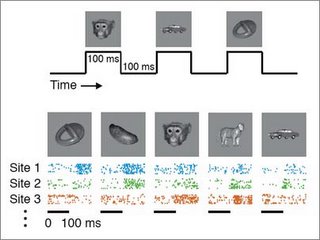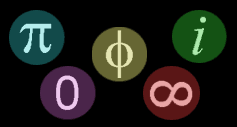What differentiates us from other species (birds, animals, insects, fish, etc.)?
Is it the look and feel, the intelligence, or the ability to adapt the environment to suit our needs rather than adapting to the environment?
The answer lies in one single word. The most dreaded subject we learned in our school.
"Mathematics"
Mathematics is the language of science. Should we say the language of a highly developed consciousness? It is the only Universal language; you can even talk to an Alien civilization using mathematics.
"An equation means nothing to me unless it expresses a thought of God."
- Srinivasa Ramanujan (1887 – 1920)
"Equations are more important to me because politics is for the present, but an equation is something for eternity."
- Albert Einstein (1879 – 1955)
So, our ability to understand simple counting to complex equations makes us different from other species.
As Ramanujan expressed – "God must be a mathematician then." Math is ingrained in our everyday life even though we are unaware of it.0101101000100000010010010101011001010111001000000100111101001100
0101010001001100001000000100011101010010010011010010000001010110
0101101001011000010100110010000001001001010101100100100001000110
01001111010001110010000001000111010001100100110101010110
The above zeros and ones look like a lovely pattern. However, it could be your email getting transmitted across the globe. The above data is represented using the binary number system (Computers use the binary number system). There is a hidden message in the above zeros, so see if you can decode the message.
Clues to decode the message
- I used a cipher, which was used in the biblical times.
- The total number of words in the message equals a Fibonacci number
The following table shows two interesting number sequences in mathematics. These Sequences have a lot of impact on our daily life and our surroundings.
Two interesting number sequences
Fibonacci Numbers: 0, 1, 1, 2, 3, 5, 8, 13, 21, 34, 55, 89, 144, 233, 377, 610, 987, 1597.......
Prime Numbers: 2, 3, 5, 7, 11, 13, 17, 19, 23, 29, 31, 37, 41, 43, 47, 53, 59, 61…........
Fibonacci Series
Leonardo da Pisa (aka Leonardo Fibonacci), an Italian mathematician (1175-1250), introduced the Hindu-Arabic number system to Europe, the method we use today with a ten-digit decimal system with the symbol for zero. He discovered a number series where you add the previous two values to get the new value, later known as the Fibonacci series. He wrote a famous book 'Liber Abaci' on how to do arithmetic using the decimal system in 1202.
Here are some interesting facts about the Fibonacci number related to Nature. Let us look closely at flowers; the interesting point is that the number of petals on a flower is often one of the Fibonacci numbers.
1 petal white calla lily flower, 2 petals euphorbia flower are rare, 3 petals trillium flowers are common, Hundred of species of 5 petals columbine flower in wild and cultivated, 8 petals bloodroot flowers are not common but there quite several species, 13 petals black-eyed Susan. The daisy family's outer ring of ray florets also illustrates the Fibonacci sequence. Daisies with 13, 21, 34, 55, or 89 petals are expected. 21 petals Shasta daisy flower. Ordinary field daisies have 34 petals. (Read more).
Golden Ratio (Phi = 1.618033988749894….)
If you divide any Fibonacci number by the previous number, you will get a ratio of ar ound 1.618… It occurs in Nature at a golden angle of 137.5 degrees (360-360/phi). Take any leaves on a plant; the growth of the leaves on a stem follows a spiral path to the top at an angle of 137.5 degrees. This angle helps the leaves maximize their exposure to sunlight and minimize the shadow it casts on other leaves. Euclid defined the Golden ratio around 300 BC. Luca Pacioli, the 15th-century Italian mathematician, equated the Golden Ratio with the incomprehensibility of God. The most surprising case for the Golden Ratio is its association with Black Holes, a discovery made by Paul Davies of the University of Adelaide in 1989 (read the article 'The Golden Rule').
ound 1.618… It occurs in Nature at a golden angle of 137.5 degrees (360-360/phi). Take any leaves on a plant; the growth of the leaves on a stem follows a spiral path to the top at an angle of 137.5 degrees. This angle helps the leaves maximize their exposure to sunlight and minimize the shadow it casts on other leaves. Euclid defined the Golden ratio around 300 BC. Luca Pacioli, the 15th-century Italian mathematician, equated the Golden Ratio with the incomprehensibility of God. The most surprising case for the Golden Ratio is its association with Black Holes, a discovery made by Paul Davies of the University of Adelaide in 1989 (read the article 'The Golden Rule'). The golden ratio governs the nautilus shell's (cross-section is shown on the left side) growth pattern of its chambers. The Greeks incorporated the Golden Ratio into their Art and Architecture – many of their building, including the Parthenon, are considered antiquity's most perfect structure.
Prime NumberEvery positive number is either a prime
number or a by-product of Primes. However, it's been ages since we hunted for the formula to predict the prime numbers, and the complete procedure to predict the prime numbers still eludes us. Following are the effects of finding the formula to predict prime numbers.
- The collapse of current cryptography (Public / Private Key Infrastructure) standards (used in SSL / TLS).
- The collapse of Internet Secure Communications (Banking and Credit Card transactions)
Nature & Mathematics
After looking at the above 3 Numbers (Fibonacci, Golden Ratio, Prime), it is interesting to know that Nature still hides a lot of information from us or rather gives subtle clues for us to discover the ultimate truth, and mathematics is one of the critical science which helps us to understand the mysteries of the Nature.
So, as a species, our ability to understand Nature is far superior to other species.
What is the next level of our consciousness? Is it nirvana? Or perfection from the scientific point of view? Are there any species that have achieved the next level of consciousness?
Imagine an entire society in a state of nirvana!
A state where science is frozen while the self blends with the Oneness.
"The reasonable man adapts himself to the world; the unreasonable one persists in trying to adapt the world to himself. Therefore, all progress depends on the unreasonable."
- George Bernard Shaw (1856 - 1950)
Glossary
| Prime Number | A Prime Number is a positive integer not divisible without a remainder by any positive integer other than itself and one. Examples. 2, 3, 5, 7, 11, and 13 are Primes. |
| Mersenne Prime | Named after the French Monk and mathematician Marin Mersenne, born in 1588. He investigated a particular type of Prime Number 2P-1, where P is an ordinary prime number. |
| Fibonacci Number | The Fibonacci number is a series generated by adding the two preceding numbers. Example. 1, 1, 2, 3, 5, 8, 13, 21, 34, etc. Dividing a Fibonacci number by a previous one. For Example., 21/13 or 8/5 results in an answer close to 1.61803, known as a Golden Ratio. |
| Golden Ratio | 1.618033988749894848204586834365638117720……. This unique number represents the Golden ratio, denoted by the Greek letter Phi. The digits of the Golden ratio go on forever without repeating. |
| Pi | Pi represents the number 3.14159265… which is the ratio of the circumference of a circle to its diameter. An irrational number that cannot be expressed as the ratio of two whole numbers and has a random decimal string of infinite length. |












